So you’re having a promo video for your app or a game trailer produced?) Or you’re producing it yourself.
You know why you’re doing it: if a picture (or screenshot) is worth a thousand words, imaging how powerful a video can be to show what’s unique about your app, etc.
You probably already have several ideas on how you’re going to use it.
But since you’re spending money and/or time on that video, shouldn’t you make sure you make the best out of it?
Well, we’re happy to help you out with this. After all, it’s in our interest to prove you what we believe in: video is one of the best assets you can have when promoting your app.
And not only we’re going to give you plenty of ideas on where to use your promo video or your game trailer, we’re also going to give you some tips on how to get the best out of every channel and what kind of videos works best on each.
What kind of video do you have?
Where you can use your video is going to depend on the type of video you have.
And I’m not talking about the style here (motion design, live video, etc.), but rather the content and purpose of the video.
Is it a pretty thorough walkthrough of your app? A 15 seconds trailer? A short overview of the app?
A 45-60 seconds video showing what’s unique about your app or so great about your game will, in most cases, be perfect to use on most channels.
There are some instances and channels though, where different types of videos are going to be more efficient or even required.
Let’s dive in.
Video on the Google Play Store
This has (obviously) been one of our favorite features of the Google Play Store: it lets you add a video.
It’s one of the most visible assets on your Google Play Store page, as it shows up right next to the app screenshots.
In one click (or one tap if they are on their phone or table) and a few seconds, visitors can know why they need your app or want to play your game.
What’s pretty cool about it too, is that the views you get on your video through the Google Play Store count as views on YouTube. And the more views you get on YouTube, the higher your video is ranked in YouTube search results and therefore Google search results (more on that later -engagement matters a lot as well).

Video on the Google Play Store
A few tips:
- Google Play allows you to localize your video, so you can have one video per language. That’s pretty awesome if your users don’t all speak English and you’ve produced the video in several languages
- If you haven’t translated your video itself in several languages, what you can do is create transcripts in different languages and add that on your YouTube video. Google Play will automatically display the right transcript based on the user’s language settings.
Video on the App Store
Video is finally coming to the App Store with iOS 8!
I love Apple, don’t get me wrong. They do have a strong tendency to be late to the party, but eventually act on good ideas.
They experimented back in November 2013 by featuring the Clumsy Ninja app with a 59 seconds trailer.
At the WWDC14, video was introduced and it is called an App Preview. The example given was the one of Monument Valley.
We’ve read and watched all about the new format for those app previews since the announcement.
We’ve been thinking quite a lot about it too, and already produced a few. And if you want to read about our thoughts on why they are great and not so great as well as get some tips, check out this post on app previews.
Video on Alternative App Stores (Amazon)
If you have an Android app with engaged users, you should consider alternative app stores to get additional distribution channels.
The most famous is the Amazon App Store, and Amazon did things right since they let you have up to 5 videos!
OK, 5 might be a lot. But you could for example have a 15/30s video as well as a more in-depth walkthrough.
Here are some that let you add video to your app page:
And if it’s a YouTube link those stores ask you, it’s another opportunity to get some views.
Video on your app website or landing page
Increase conversion with a video on your app website so visitors can get what your app is all about quickly, or see some gameplay.
If your app website or the landing page you’ve created has the right layout, your potential customers will get everything at a quick glance: your headline along with a short description, your promo video and a call to action (CTA) to download the app.
You actually don’t have to wait until your app is released to embed your promo video on your website. You can have a “coming soon” version, with a call to action inviting to get notified when the app launches. With some video platforms like Wistia, you can even have a sign-up form directly at the end (or during the video).
Once your app is available, change the video with the app store badges at the end as well as your CTA.
A few tips for embedding a video:
- Put the video above the fold, or right after your call to actions (usually the app store badges)
- Pick the right thumbnail, one that integrates nicely and will get viewers to click. Don’t hesitate to create a custom thumbnail.
- If you use a “play button” rather than a thumbnail, make sure it’s visible enough so visitors know there is something to see there.
A few examples :
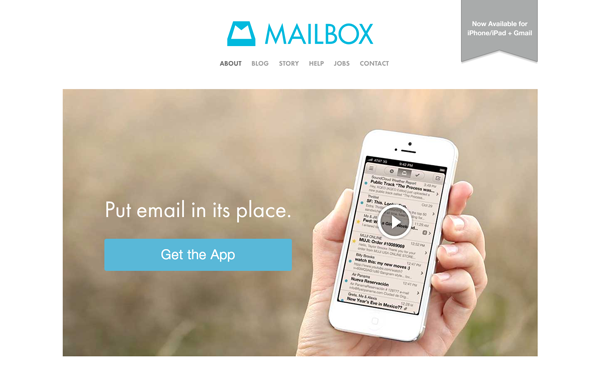 This is how the Mailbox landing page looked after they launched
This is how the Mailbox landing page looked after they launched
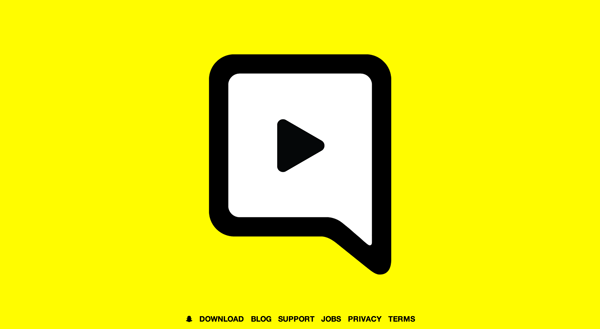 The Snapchat homepage, with a button to launch the video full screen
The Snapchat homepage, with a button to launch the video full screen
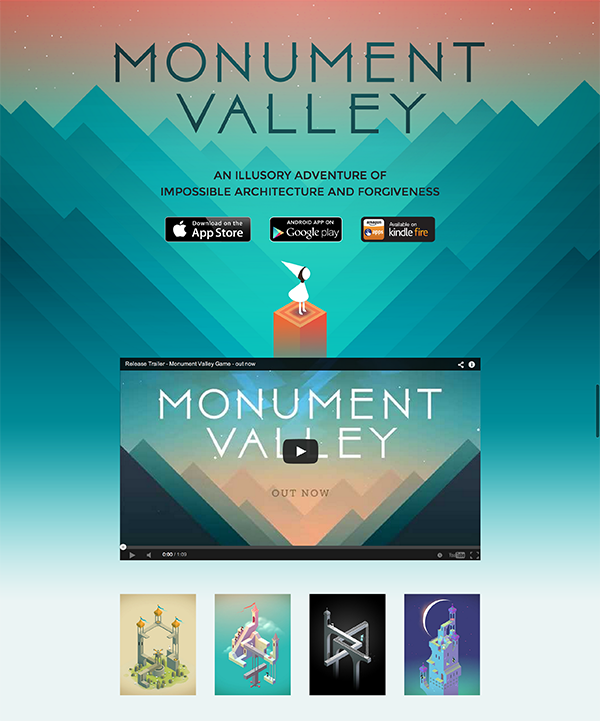 Monument Valley landing page, with the app store badges followed by video
Monument Valley landing page, with the app store badges followed by video
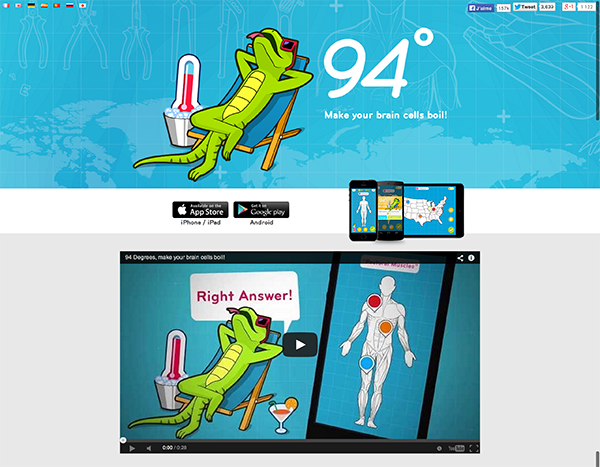 The 94 degrees landing page, with the app store badges followed by video
The 94 degrees landing page, with the app store badges followed by video
Video platforms we recommend to embed your video:
YouTube
When talking about video, YouTube is obviously part of the discussion.
While it might not be the perfect platform to embed your video (ads before the video, banners, thumbnails at the end, etc.), you have to put your video on YouTube.
And not only because you can use that YouTube link in everything Google (Google Play Store – see above – or Gmail – see further below)…
…But because YouTube is simply the second search engine in the world.
An engaging video with a good amount of views (it’s not all about the views, engagement is also taken into account by YouTube’s search algorithm) will help your app get more exposure.
Whether you have an app for football fans or a todo list app, helping potential customers find your video through YouTube will get you more downloads. And since they’ve watch your app promo video, they’ll already know what they’re getting into.
A few tips to get your video found (it’s really quite similar to ASO):
- Choose the right title, making sure your app name and some keywords are in there (but keep it user friendly). Don’t hesitate to add “official”: as more and more videos and reviews of your app are shared, you want the one you crafted with love (or had someone produce) to be found easily
- Description
- Include a link to your app or website in the first 2 lines (the ones initially showed to viewers)
- Make sure to include keywords in your video description. It can be the voice over script, your app pitch or description, etc.
- End the description with other important links
- Choose the right tags, and put the most important terms first
- Create a custom thumbnail and make sure it works well when it’s both big and small
Get your app reviewed by bloggers and journalists
Bloggers and journalists are busy.
Really busy. At least the ones you want to review and talk about your app.
They receive hundreds of emails. Some have terrible pitches, some have good ones.
We’ve talked before about
how to pitch your app (and
others as well) and by including a YouTube link to your video in your pitch you give to your contact a quick and easy way to understand what’s unique about your app.
“A video provides the quickest way to initially assess your app, letting [bloggers] know if it’s worth downloading and testing further” – Erica Sadun – The Unofficial Apple Weblog (TUAW)
It’s easier for them than reading a press release. Or than actually downloading the app, creating an account (give them logins if you need them to do that by the way) and trying it.
With a video, they can watch the first 10 seconds. If it looks like something worth their time, they’ll probably watch the rest of the video.
And if they like it what they’re seeing, then they can download your app and try it out.
“Most bloggers use Gmail, and a YouTube video in an email pitch catches the eye more than any other link” – Maxime Perignon – AppAdvice Daily
A few tips:
- You can also put a link to your video in your press release
- Again, make sure you have a good thumbnail
Email signature
One of the great things about Google is that they integrate their products one with the other.
So when you have a YouTube link in your email (not the short YouTube URL though, the full one), it displays a video thumbnail at the end of the email.
Once your contact opens your email (that’s why you need a good headline/subject), if he uses Gmail he’s just one click away from your video.
Not only will your contact appreciate it, it also means that you drastically increase your chances of your app being considered for review: once the video is launched, your pitch starts!
Influencers in your niche
Just as bloggers and journalists, the people you’re asking feedback to are most likely busy and sending them a short email with a YouTube link makes it easy for them to decide if they’re going to help you.
By the way when you reach out to people, don’t just ask them “what do you think”. Try to have precise questions, that they can answer in a few minutes.
Ad networks
Ads are evolving.
Users got bored and annoyed with banners, so click-through rates went down.
Ad networks are now coming up with better “native” ads, that don’t ruin the user experience. And many of them have also made a move to video ads, as they have better conversion rates.
It started with companies like
Vungle,
Ad Colony that specialize in video ads.
Vungle and the others are a great way to get revenues for your app if you use the right placements and make sure it fits well into the user experience.
Most of the videos ads used by ad networks are 15 seconds.
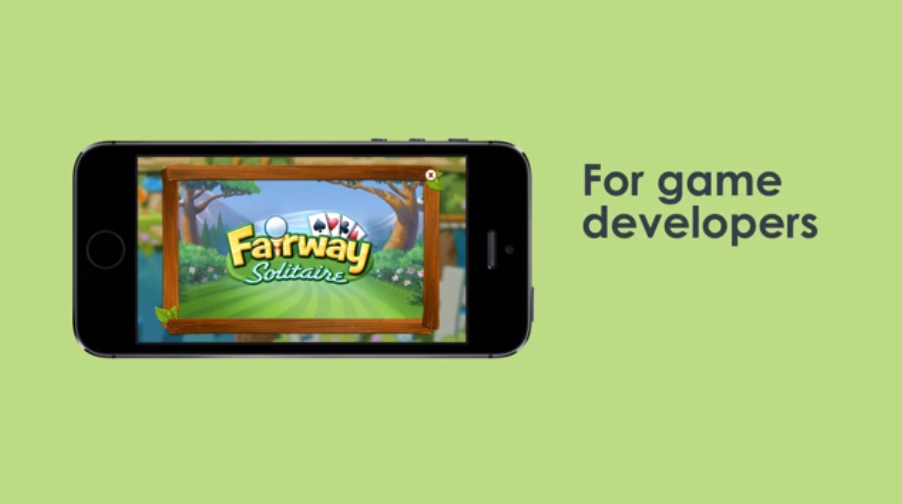
Chartboost example: user plays the video to obtain a new life
It’s quite short, and you have to make sure you include the essentials: your app name, key benefits or gameplay, and a call to action. It makes for a very dynamic video that’s to the point.
Here are some 15s trailers examples we’ve produced:
Creating an additional 15s version video for your app is definitely a good idea if you’re considering video ads (including on Facebook – see below).
Here are a few companies that can help you either monetize or get users with video ads:
- Chartboost (they now put a big emphasis on video ads)
- GameHouse
- Vungle
- AdColony
- TapJoy
- Milenial
- MobFox
A few tips for your 15 seconds trailer:
- Make sure your app name is mentioned and show your icon/logo so people can recognize it later on
- Insert a clear “Download now” call to action at the end
- Focus on showing the key parts: impressive gameplay or cool benefits of your app
- Keep any text you’re displaying very short and big enough (they’ll be seen on a mobile device and have to be readable)
Facebook Video ads
You can match your database with Facebook to target your best users or reactivate some, find people that are like your best customers, etc.
Their photo page post ads were pretty effective, with a direct “Install Now” call to action below it that leads directly to the App Store or Google Play Store.
And you can now have basically the same thing, with a video thumbnails that allow your potential customers to watch a 15 seconds promo video about your app. If they like what they see, they just have to tap the “Install Now” button and are brought to their app store.
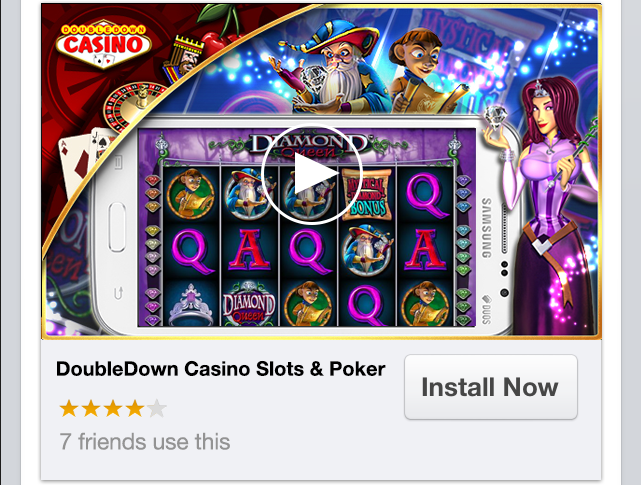
Here’s how the facebook video ads display – with a direct call to action!
Another good reason to create a 15’ video for your app!
A few tips:
- Choose the right thumbnail, which probably means creating a custom one that shows your app name and a screenshot, as well as other visual assets if it helps branding
- App ratings are very important, since they appear on the ad. Don’t do facebook video ads (and probably paid advertising altogether if you don’t have good app ratings)
- Craft the right one-sentence pitch. It displays above your video thumbnail.
Trailer platforms / Startup Videos
AppPicker
AppPicker has been featuring mobile apps and their trailers for quite some time.
And they still do. They even have a pretty neat iOS app to display them, putting potential customers just one tap away
By registering as a developer, you can send their team your video so they display it on their website and app.
There is no requirement for length, but keep in mind that people’s attention span is short. So we’d advise against going over 60 seconds.
Startup-Videos
If you’re a startup and you’ve put more budget in to produce your video (basically if you have an on-location video for your app, with some nice storytelling) then you can submit your video on
Startup Videos to give your app more exposure.
A few other ways to use your video
Video on Social Media: Facebook/Twitter/Instagram/Vine
Once you have your video, you should of course share it on your social media accounts to let your followers know about your app or game.
Now that Instagram gives the possibility to create 15’ videos, it gives you another place to share yours.
And if you feel like it, you could even produce a 6 seconds video for your Vine account!
Pitching / App Awards
If you have and ever tried doing a live demo of your app, I bet it didn’t go as smoothly as you had hoped: internet connection is not working, something that always worked great before bugs on the app, you’re a bit stressed out and can’t present the app well, etc.
But if you have a well-thought video that shows what’s great about your app in a short time, then you just have to launch it while you’re on stage.
If everything else goes wrong (I hope it doesn’t) at least they know what your app does or how your game looks. And you can keep your focus on pitching the aspects not covered in the video and answering questions.
Sending out a cool video when you’re applying to an award also gives a quick way to the jury members to evaluate your app.
Exhibitions
What better than a cool video to
catch the eye of the attendees passing by your booth? Besides maybe some booth babes (although they probably
don’t work that well).
Put an HD video on a screen, and you make sure that people can get a nice introduction to your product.
A few tips:
- It will work better if the video can be understood without sound
- If we produced the video, ask us for an uncompressed HD file for maximum quality
Investors / Crowdfunding platforms
It can be hard to pitch an app that doesn’t exist yet.
But what if you need funds to actually develop it?
Video can be produced working only with screenshots or .psds, and can help you pitch investors or potential backers.
On a crowdfunding platform like Kickstarter or Indiegogo, you don’t want to show only the app: you have to tell the story behind it as well as the team.
If you’re pitching to investors, what’s great about having the video is that you can put the app in its best light.
No messy live demo. And you keep your energy for the speech about your team and objectives.
Forums
A good way to promote your video, find early adopters and maybe even influencers is through forums relating to your app niche.
Of course you have to get some authority there and be involved with the forum before starting to do any promoting of your app. But if you identify the right forums and start early this shouldn’t be a problem.
Once you have something to show (first designs, screenshots), start talking a bit about your app. If you have an app video, there’s no reason why you shouldn’t post it.
And if all promotion is forbidden on the forum (read the rules!), then have a link to your app website and/or video in your signature.
Quora
Quora is a great place to get some answers from experts or people in general.
Your app might be worth mentioning in some answers, as long as it’s relevant and not blatant autopromotion.
If you do mention it, think about embedding a YouTube video so that people see instantely what you’re talking about.







